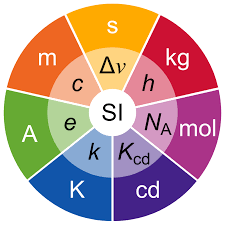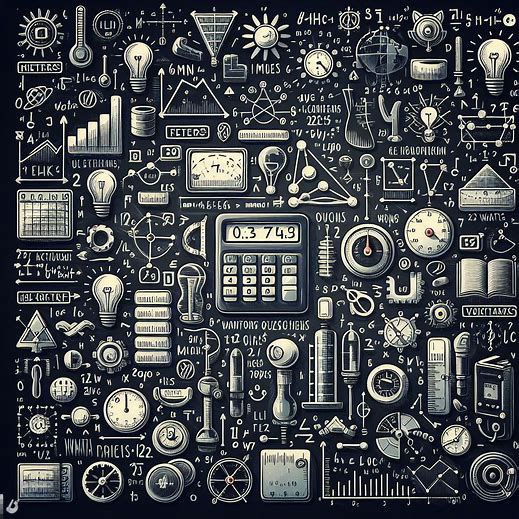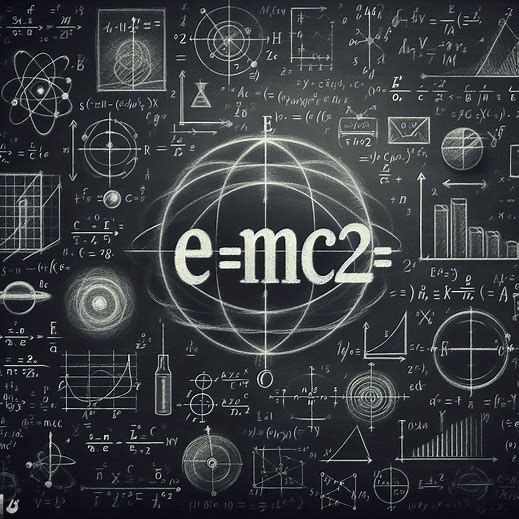Einstein’s theory of relativity changed how we view the universe. Imagine space and time not as separate things, but woven together like a fabric. This “spacetime” can be warped by massive objects like stars. That’s gravity, not a pull, but a curvature! Relativity also has some mind-bending effects. For objects moving super fast, time slows down and even lengths contract. While these effects are only noticeable at incredibly high speeds, they’re crucial for understanding the universe. Relativity isn’t just mind-blowing science, it’s also practical! It helps us develop accurate GPS and underpins our exploration of the cosmos.
Absolutely, let’s delve deeper into E=mc² and Special Relativity.

Special Relativity: Rethinking Space and Time
Imagine two spaceships racing through space at high speeds relative to each other. Special Relativity challenges our everyday intuition about space and time, proposing:
- Relative Constancy of Laws: Regardless of the constant velocity (speed in a straight line) of an observer, the laws of physics remain the same. Imagine one spaceship observes the other moving at a high speed. Both spaceships,despite their relative motion, will still agree on the fundamental laws governing the universe.
- The Speed of Light Limit: The speed of light in a vacuum is an absolute constant, meaning it’s the same for all observers, no matter their own motion or the motion of the light source. Even if one spaceship throws a light beam in front of the other speeding spaceship, both spaceships will measure the light beam traveling at the same incredible speed.

These seemingly simple postulates lead to profound consequences for our understanding of space and time:
- Time Dilation: As an object approaches the speed of light, time for that object appears to slow down relative to a stationary observer. Imagine the crew on the fast spaceship aging slower than the crew on the stationary one during a long journey.
- Length Contraction: Objects in motion along the direction of their motion appear shorter in length compared to an observer at rest. If you could look at the fast spaceship from the stationary one, it might seem squished!
E=mc²: Mass and Energy, Two Sides of the Coin
This famous equation arises directly from Special Relativity. It tells us:
- Mass-Energy Equivalence: Mass (m) and energy (E) are not separate entities, but rather different forms of the same underlying reality. They can be converted into each other under the right circumstances.
- c²: The Conversion Factor: c represents the speed of light, a truly enormous value (about 3 x 10⁸ meters per second). Squaring it (c²) makes it an even more mind-boggling number. This huge factor tells us that even a tiny amount of mass can be converted into a tremendous amount of energy.
Unveiling the Power of E=mc²:
- Nuclear Reactions: In nuclear power plants and nuclear bombs, a small amount of mass is converted into a vast amount of energy. This happens through nuclear fission (splitting atoms) or fusion (combining atoms). The energy released comes from the powerful forces holding the atomic nucleus together. A tiny fraction of mass converted through E=mc² results in a gigantic energy release.
- Particle Accelerators: These machines accelerate subatomic particles to speeds close to the speed of light. Special Relativity predicts that as these particles approach such high speeds, their mass increases. This showcases the link between mass and energy.
Beyond the Equation:
E=mc² is a cornerstone of modern physics, but it has limitations:
- Special Relativity applies to constant velocities, not acceleration. General Relativity, another theory by Einstein,deals with gravity and acceleration.
- The equation deals with rest mass, the mass of an object at rest. It doesn’t account for the additional energy an object possesses due to its motion (kinetic energy).
Further Exploration:
Here are some resources to deepen your understanding (without URLs):
- Search for “Minkowski spacetime” to explore the mathematical framework for Special Relativity.
- Look for “thought experiments in Special Relativity” for thought-provoking scenarios that illustrate the theory’s concepts.
- Many universities offer online courses on Special Relativity, providing a more in-depth exploration.
Remember, grasping E=mc² and Special Relativity takes time and effort. Don’t get discouraged if it doesn’t click immediately. Keep exploring, and the beauty of this theory will gradually unfold!



